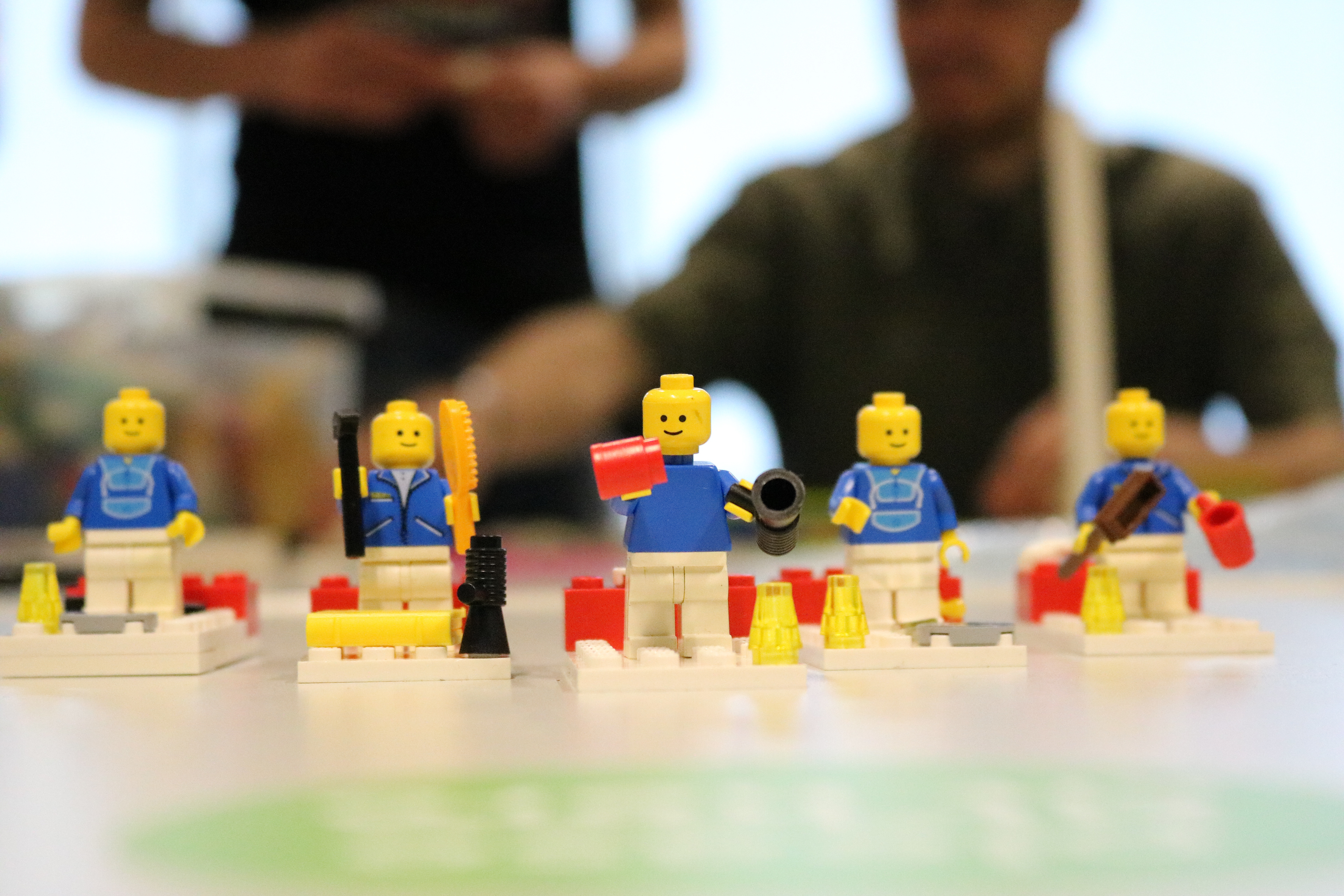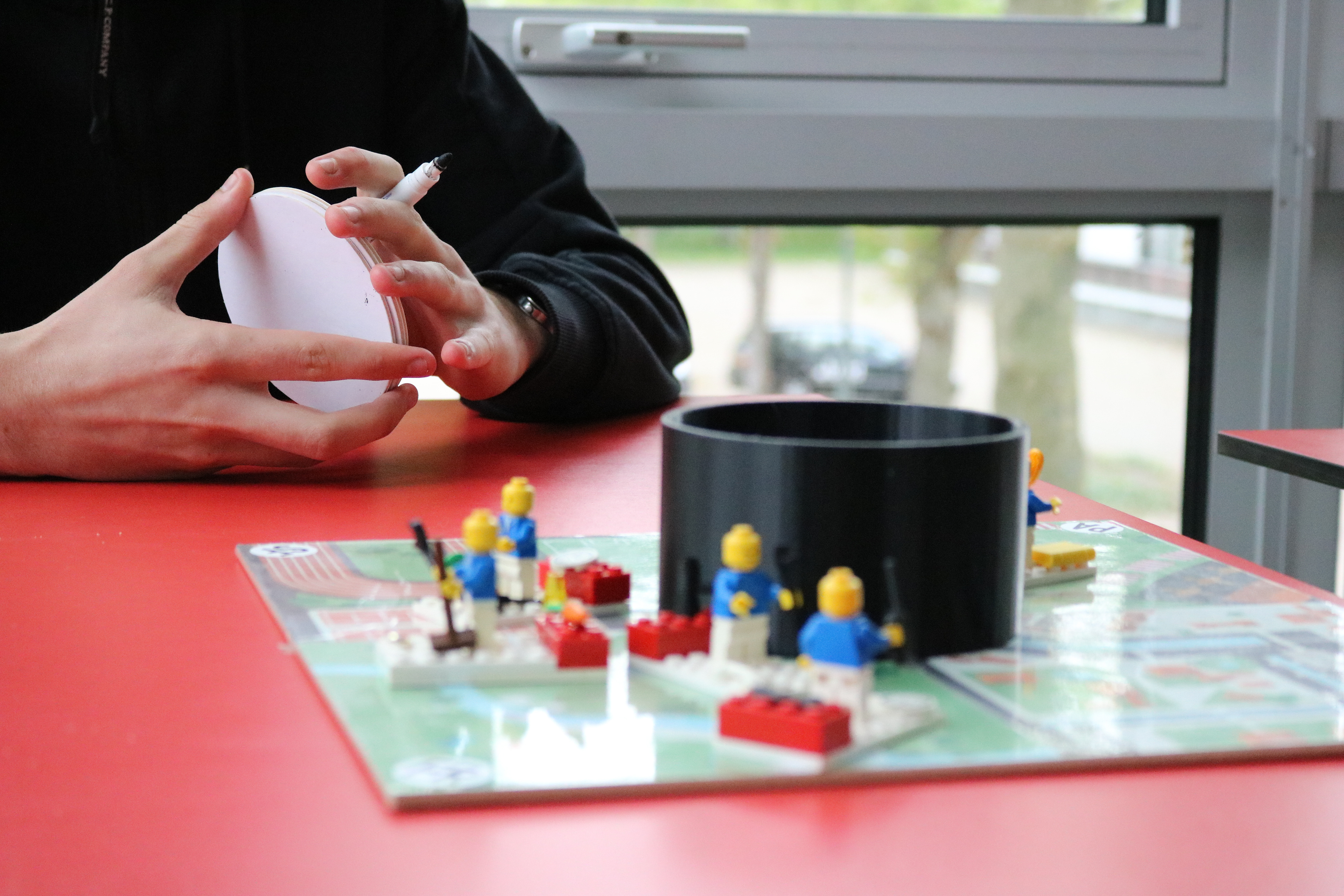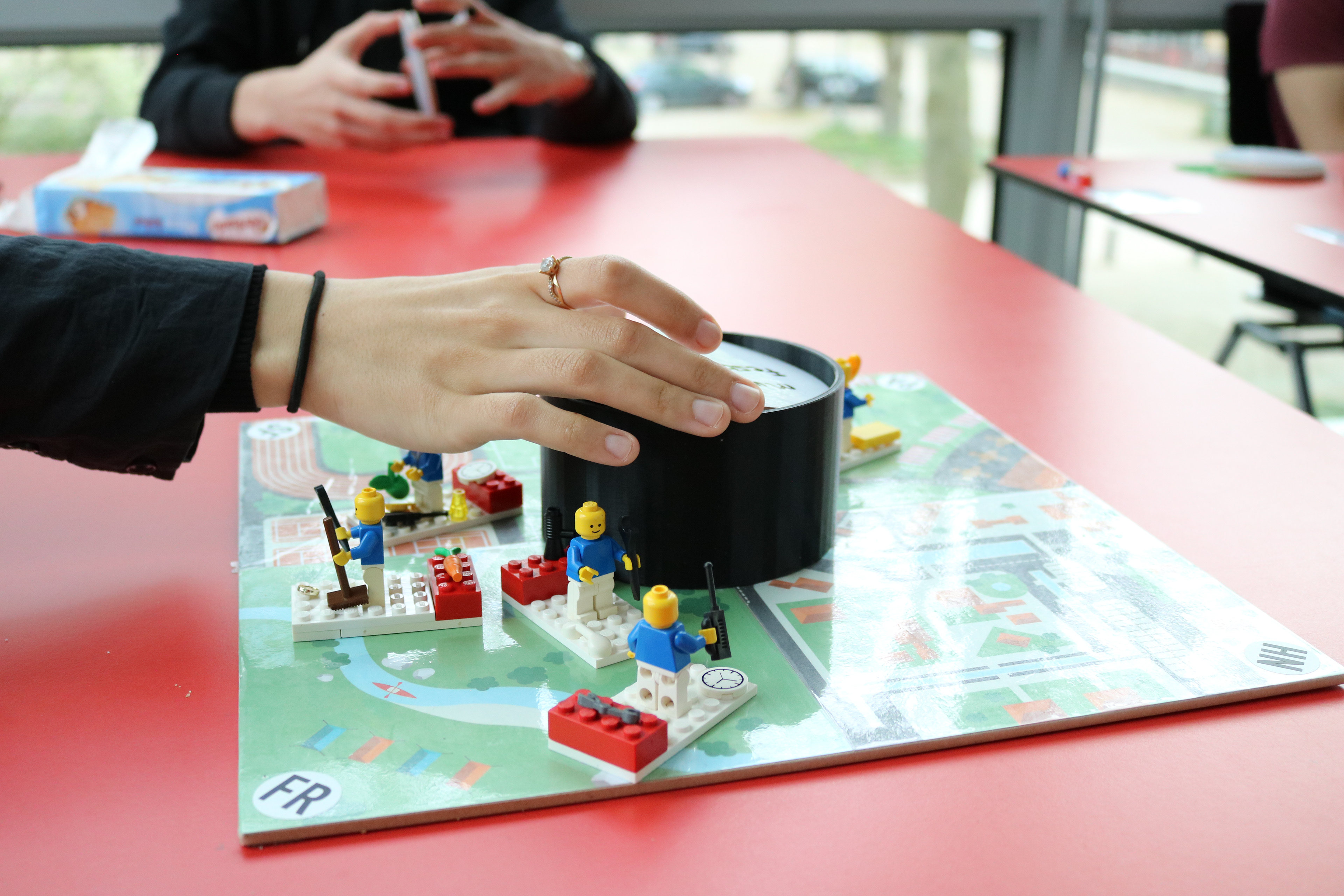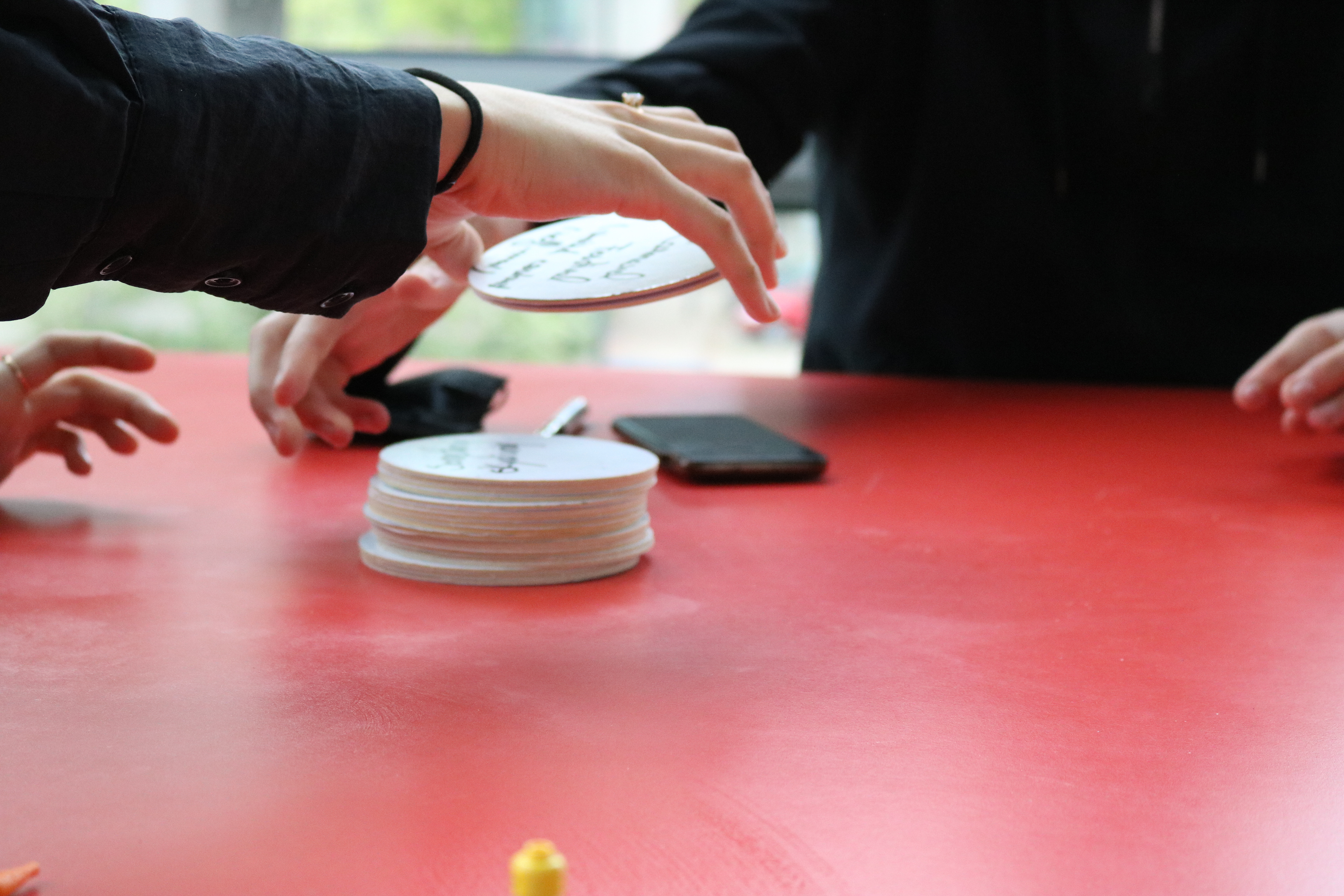CIVIL PARTICIPATION OF YOUNG ADULTS
A qualitative study to test the effect of a tangible and playful toolkit on the motivation of young adults to participate in non-profit events.
By Ivy van Dongen, Helder Stompff, Boy de Wit, Marc Wijkmans
The civil engagement of young adults in a community has positive outcomes for young adults such as improved social well-being and improved youth development. Yet, many countries report a decrease in civil engagement among the younger population. This doesn’t mean, however, that young adults don’t have the capabilities to organize non-profit events. Quite the opposite is true. We believe that young adults are full of creative ideas and have the power to make an impact on our social environment. They just need to find the intrinsic motivation to use that creativity, and more important, make their creativity come to life. Therefore, we designed a toolkit that assists young adults in the creation of concepts/ideas for non-profit events in a playful manner. Through a qualitative study, we want to examine the effect of a tangible and playful toolkit on the intrinsic motivation of young adults to start a non-profit festivity.
The Toolkit
Step 1: Getting to Know each other
The first phase of the design process is getting to know each other. The aim of this stage is to get acquainted with the other team members in a playful and fun way. The tangible design for this phase of the project is staged around five LEGO figures, and each LEGO figure represents a member of the team. On top of that, multiple LEGO objects that represent personal characteristics were selected. The goal is that every member of the team is going to guess the personal traits of one of the other team members and ‘build’ a personal characteristic profile. To name a few, some of the characteristics are, “Always takes care of everything”, “Can’t function without coffee”, and “Only thinks about school and work”.


Step 2: Finding Common Ground
The next tool in the toolkit assists users in finding common ground. In other words, finding similarities in value standards, goals, and expectations. To achieve this, four different festival locations were designed, which can be used to answer a set of general questions. One team member reads out loud the questions one by one, and in the meantime, every team member answers the questions by placing their LEGO figures + profile (see Getting to Know Each Other) on one of the festival grounds. By answering and discussing the question, a general indication of the project course is created. For example, it becomes clear how much time each member is willing to put into the project, and it clarifies what the general theme of the project is going to be.
Step 3: Brainstorming
Foremost, the brainstorming tool is based on existing methods to generate ideas and concepts. These methods are: a) Osborn’s Brainstorming Technique, b) The Gallery method, and c) the 6-3-5 method. The goal of the Osborn Brainstorm technique is to generate many ideas quickly. Each participant is required to write down multiple ideas in a small period of time after which the ideas are shared and discussed with the team. The Gallery and 6-3-5 method requires users to generate an idea after which the idea is passed on to other participants. Then, the initial idea is updated with a new idea. The goal of the cards is to create many ideas/concepts, and filter the less interesting ideas/concepts out. Players can write down ideas on the cards and place the cards in the container. The container can hold a maximum of 30 ideas. Because of this, participants are required to carefully think about the quality of there ideas and erase 'bad' ideas.



Step 4: Choosing an Idea
For this phase of the ideation process, the Six Thinking Hat method created by Edward de Bono was integrated in the toolkit. The six thinking hats method allows participants to evaluate ideas from different angles, which widens their viewpoints on the concept. The six hats are a) the information hat, which evaluates the ideas from an information-driven perspective and focuses on the facts. b) the optimistic hat, which evaluates the value of the idea and describes the positive effects. c) the judgmental hat, which evaluates the negative effects of the idea and tries to figure out the flaws. d) the emotional hat, which evaluates the ideas based on the emotions they provoke and to what extent they are raised. e) the creative hat, which evaluates the possibilities of the ideas and describes opportunities to develop the ideas further. f) the managerial hat, which controls if the other hats (participants) are evaluating the ideas correctly
and takes notes.
and takes notes.
Step 5: Defining
The next and last step in the process is defining the final concept. This means mapping out all the necessities that are needed to realize the idea/concept. To achieve this, the team is instructed to build the festivity with LEGO and while doing so, write down the individual necessities. A study conducted by Martina Schütze et al. about the “Support value of sketching in the design process” suggests that participants rate a design problem as less challenging. That being said, building the festivity in miniature and thus sketching/visualizing the concept might decrease the perceived workload of realizing the festivity. On top of that, other research suggests there is a correlation between the subjective workload and the motivation.
MY ROLE
My main task was to construct the research methods and define the setup of the experiment. Additionally, I took part in defining the context and shaping the research question. Furthermore, I worked on the thematic analysis and developed my scientific report writing skills.
Technical University of Eindhoven TU/e
Pictures by Ivy van Dongen
Project from September 2021 to February 2022